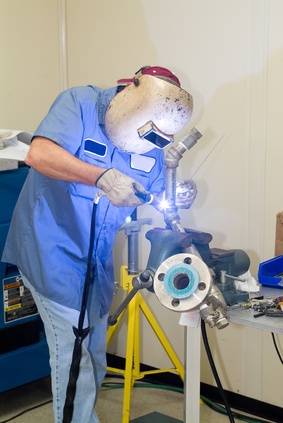
TIG welding, a form of arc welding, uses a non-consumable tungsten electrode to strike an arc and an inert gas to surround and protect the weld puddle from airborne contaminants. TIG is an acronym for tungsten inert gas.
TIG welders make a cleaner weld than other forms of arc welding and produce less smoke and fewer fumes for a healthier work environment. A wider range of metals can be welded using TIG welders than other electric arc welders. Because argon can be used with any metal, it isn't necessary to keep other types of gas on hand for welding.
TIG welders are more expensive and require more welding training than other welding processes.
TIG welding offers the potential to weld new types of materials as they become available. This versatility ensures TIG welders will be in use for years to come.
Higher quality weld joints are possible in a full range of TIG welding positions.
TIG welding was invented for the purpose of building magnesium airframes in the aircraft industry.